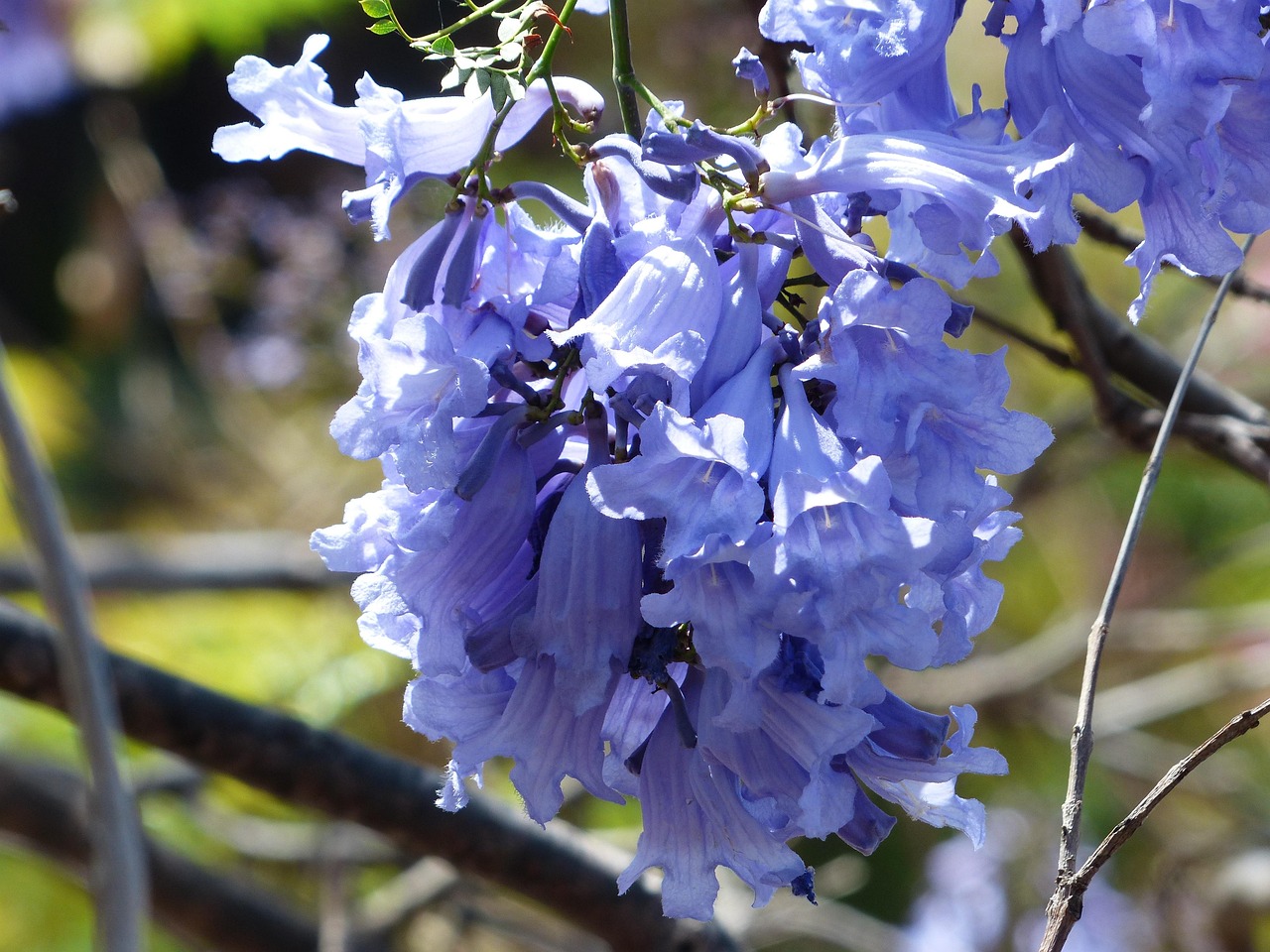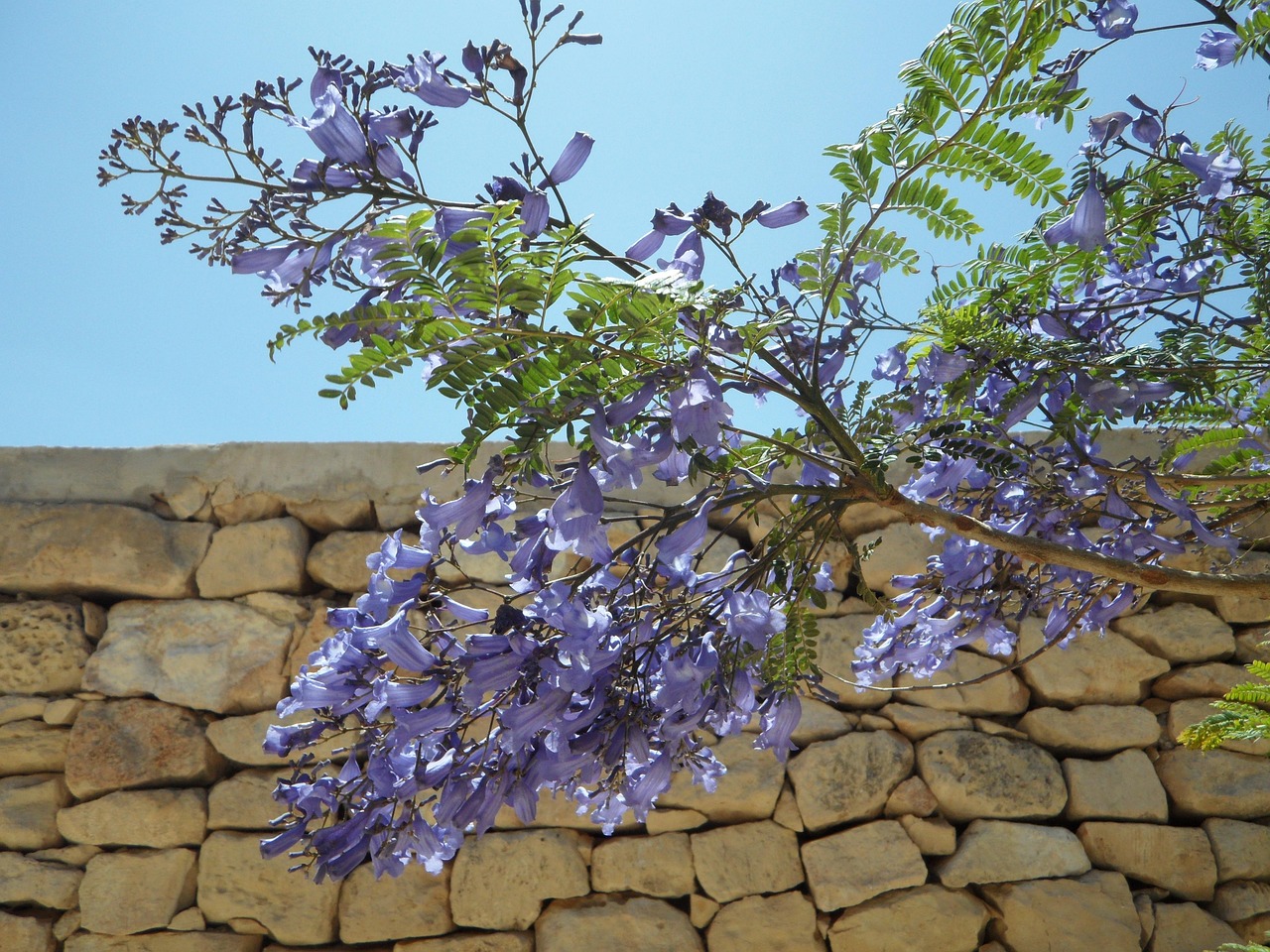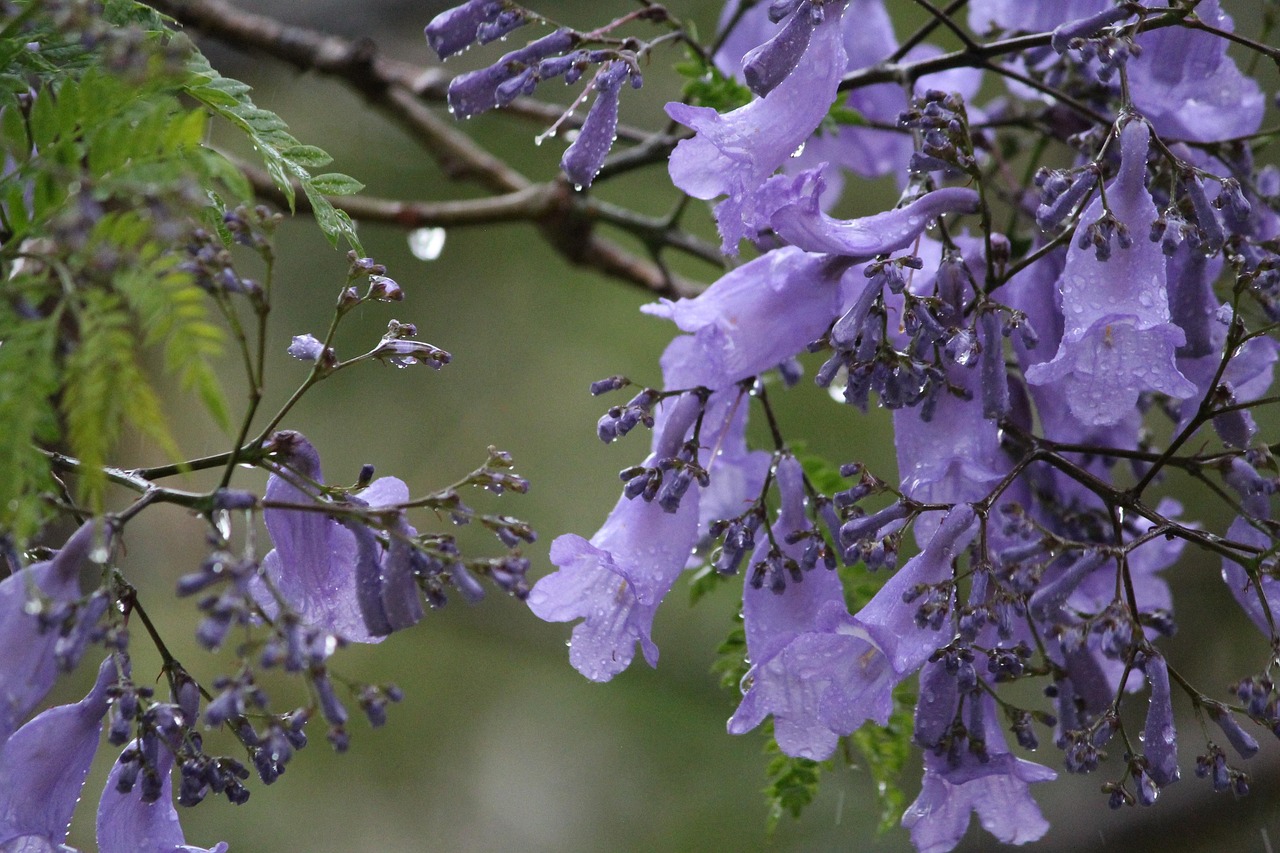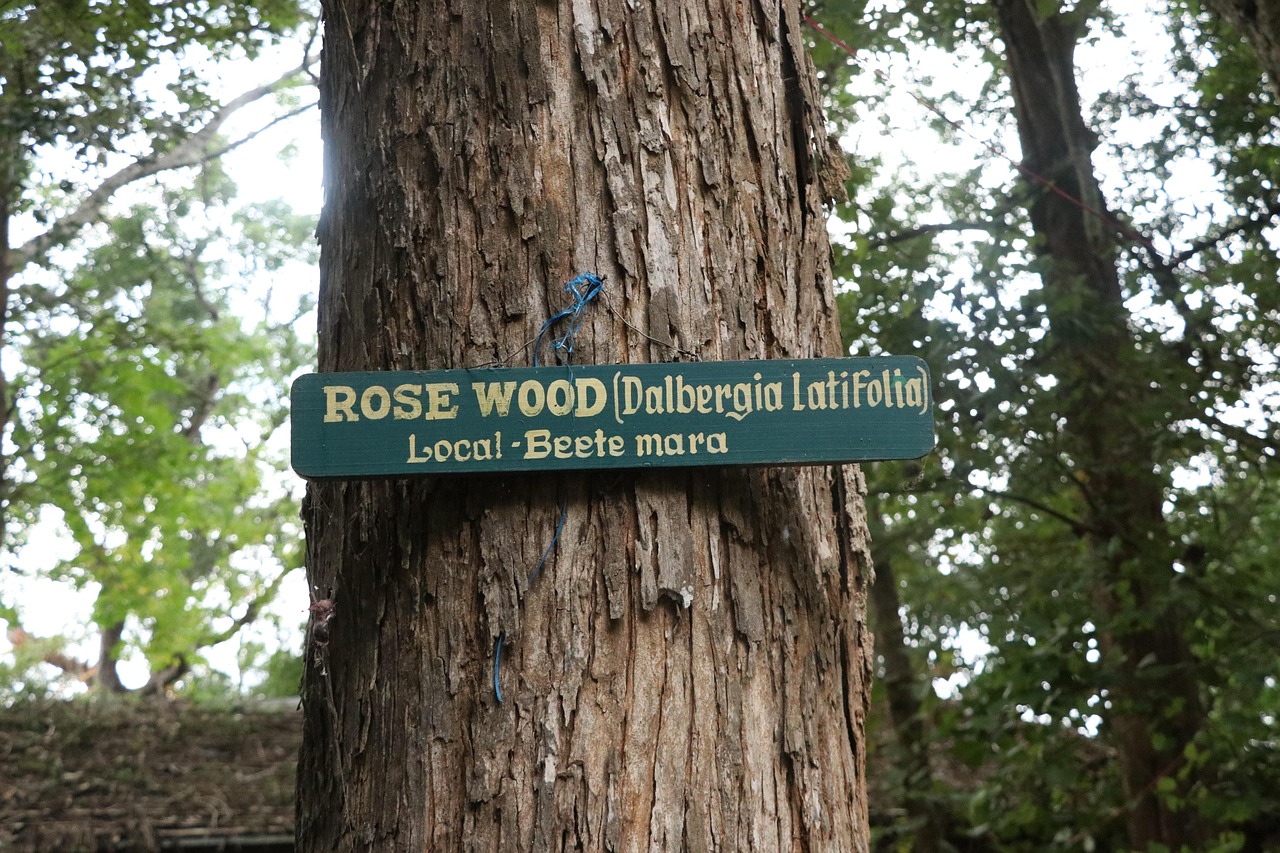The Jacaranda tree typically grows at a rate of about 3 to 5 feet per year, reaching maturity in approximately 10 to 15 years. This impressive growth rate contributes to its stunning purple blooms that attract attention and admiration.
The Jacaranda tree, known for its vibrant purple flowers, is a beloved ornamental tree found in many parts of the world. Native to South America, particularly Brazil, Argentina, and Uruguay, it has become popular in regions with suitable climates, including parts of the United States, especially California and Florida. The tree’s striking blooms and lush foliage make it a favorite among landscapers and homeowners alike.

Understanding the growth rate of the Jacaranda tree is essential for anyone considering planting it in their garden or landscape. The growth rate can significantly influence how quickly you can expect to see those beautiful purple flowers. Factors such as climate, soil quality, and care all play crucial roles in determining how fast a Jacaranda tree will grow.
Growth Characteristics of Jacaranda Trees
The growth characteristics of the Jacaranda tree are fascinating. These trees can reach heights of up to 40 feet and have an equally impressive spread. Their broad, umbrella-like canopy provides ample shade. The leaves are fern-like, adding to the tree’s overall aesthetic appeal.
Jacaranda trees thrive in warm climates with plenty of sunshine. They prefer well-drained soil with a slightly acidic to neutral pH. When planted in ideal conditions, Jacarandas can flourish and produce a spectacular display of purple blooms in late spring to early summer. The flowers are trumpet-shaped and can cover the tree, creating a beautiful spectacle.

Here are some key growth characteristics of Jacaranda trees:
| Characteristic | Description |
|---|---|
| Height | Up to 40 feet |
| Spread | Up to 50 feet |
| Growth Rate | 3 to 5 feet per year |
| Maturity | 10 to 15 years |
| Blooming Season | Late spring to early summer |
| Flower Color | Purple |
The growth rate of the Jacaranda tree can vary based on several factors. Climate plays a significant role; warmer temperatures generally promote faster growth. Additionally, the quality of the soil and the availability of water also contribute to how quickly the tree matures. Providing adequate nutrients through fertilization can further enhance growth rates.
Planting techniques can also affect the growth of Jacaranda trees. When planting young trees, it is essential to ensure they are placed in an area that receives full sun. Proper spacing from other plants will also help minimize competition for resources. Regular watering during dry spells will support healthy growth, particularly in the early years.

While Jacaranda trees are relatively low-maintenance, they do require some attention. Pruning is beneficial for shaping the tree and removing any dead or diseased branches. This practice encourages better air circulation and sunlight penetration, which can enhance overall health and blooming potential.
In addition to their stunning appearance, Jacaranda trees have ecological benefits. They provide habitat and food for various birds and insects. Their shade can help cool outdoor areas, making them ideal for gardens and parks.
Overall, the Jacaranda tree’s growth rate is an essential aspect for anyone looking to enjoy its beauty. With proper care and ideal conditions, these trees can flourish, bringing vibrant colors and life to any landscape.

Factors Influencing Growth Rate
The growth rate of the Jacaranda tree can be influenced by various environmental and care-related factors. Understanding these elements can help ensure optimal growth and enhance the chances of vibrant blooms. Below are some critical factors that affect the growth rate of Jacaranda trees:
- Climate: Jacaranda trees thrive in warm climates. They prefer temperatures between 65°F and 85°F. Areas with mild winters and hot summers are ideal for their growth.
- Soil Quality: Well-drained, sandy, or loamy soils are preferable. Poor soil drainage can lead to root rot, stunting growth.
- Watering: Regular watering is vital, especially in the early years. However, overwatering should be avoided to prevent root issues.
- Sunlight: Full sun exposure is essential for healthy growth. Jacaranda trees need at least six hours of direct sunlight each day.
- Nutrients: Fertilizing with a balanced fertilizer can promote faster growth and healthier blooms. Nutrient deficiencies can slow down development.
- Spacing: Adequate spacing from other plants allows Jacarandas to access necessary resources without competition.
Optimal Growing Conditions
For Jacaranda trees to flourish and reach their full potential, cultivating them under optimal conditions is crucial. Here are some guidelines to create the best environment for these stunning trees:
- Select a Suitable Location: Choose an area that receives full sun and has good air circulation. Avoid planting near structures that can block sunlight.
- Test Soil: Conduct a soil test to determine pH and nutrient levels. Amend the soil as needed to ensure it is well-draining and fertile.
- Watering Schedule: Water young trees deeply but infrequently. Once established, Jacarandas are somewhat drought-tolerant but will benefit from occasional watering during dry spells.
- Fertilization: Use a slow-release fertilizer in early spring to provide essential nutrients through the growing season. Follow the recommended dosage based on the tree’s age and size.
- Pruning: Regularly prune the tree to maintain its shape and remove any dead or diseased branches. This practice encourages robust growth and flowering.
Pest and Disease Management
Like any other plant, Jacaranda trees can be susceptible to certain pests and diseases that may affect their growth rate. Being proactive in pest management can help ensure the health of your tree. Common pests include:
- Aphids: These small insects can cause leaves to curl and stunt growth. Treat infestations with insecticidal soap.
- Spider Mites: These pests thrive in dry conditions and may cause leaf discoloration. Increase humidity around the tree or use miticides if necessary.
- Caterpillars: Some caterpillars may feed on leaves. Hand-picking or using organic pesticides can manage these pests effectively.
Diseases such as root rot can be problematic if the tree is overwatered or planted in poorly draining soil. To prevent this, ensure proper watering practices and good drainage.
The Importance of Seasonal Care
Caring for Jacaranda trees throughout the seasons is vital for maintaining their growth rate and overall health. Each season presents unique challenges and opportunities for care:
Spring Care
In spring, as temperatures rise, begin fertilizing the tree. This is also an excellent time for pruning to remove any dead branches and encourage new growth.
Summer Care
During summer, monitor watering closely, especially during heat waves. It’s crucial to keep the soil moist, but not soggy. Mulching around the base can help retain moisture.
Fall Care
As fall approaches, reduce watering frequency as temperatures cool down. Autumn is also a time to check for pests and diseases before winter sets in.
winter Care
In winter, protect young trees from frost by covering them if necessary. While Jacarandas are relatively hardy, extreme cold can damage their branches.
Caring for Jacaranda trees across these seasons will help maximize their growth potential, ensuring they thrive and produce beautiful purple blooms year after year.
Common Varieties of Jacaranda Trees
There are several varieties of Jacaranda trees, each with unique characteristics that can influence their growth rate and blooming patterns. Understanding these varieties can help gardeners choose the right type for their specific climate and landscape needs.
- Jacaranda mimosifolia: This is the most common species known for its striking purple flowers. It typically reaches heights of 30 to 50 feet and has a wide canopy. It is best suited for warm climates.
- Jacaranda cuspidifolia: Known for its slightly smaller size, this variety grows to about 20 to 30 feet. It features delicate foliage and is often used in smaller gardens or as a street tree.
- Jacaranda acutifolia: This species has narrower leaves and a more upright growth habit. It is less common but can be an excellent choice for urban settings where space is limited.
- Jacaranda mimosifolia ‘Alba’: This variant produces white flowers instead of the typical purple blooms. It is less frequently seen but offers a unique aesthetic for gardens.
Planting Jacaranda Trees
Proper planting techniques are essential to ensure the healthy establishment of Jacaranda trees. Here are some steps to follow when planting:
- Select the Right Time: The best time to plant Jacaranda trees is in the spring or early fall when temperatures are moderate.
- Choose the Location: Ensure the chosen site receives full sun and has well-draining soil.
- Dug a Proper Hole: Dig a hole that is twice as wide as the root ball but no deeper than the root ball itself. This encourages lateral root growth.
- Prepare the Soil: Mix compost or well-rotted manure into the dug soil to enhance fertility. This will provide essential nutrients for the young tree.
- Place the Tree: Position the tree in the center of the hole, making sure it is straight. Backfill with soil gently, avoiding air pockets.
- Water Thoroughly: After planting, water the tree deeply to settle the soil around the roots.
Post-Planting Care
After planting, ongoing care is crucial for the successful growth of Jacaranda trees. Here are some important post-planting care tips:
- Mulching: Apply a layer of organic mulch around the base of the tree. This helps retain moisture, suppress weeds, and regulate soil temperature.
- Regular Watering: For the first few months, keep the soil consistently moist. Once established, reduce watering frequency.
- Fertilization: In the first growing season, apply a balanced fertilizer every few months to support healthy growth.
- Pest Monitoring: Check regularly for signs of pests or diseases. Early intervention can prevent more significant issues down the line.
The Aesthetic Appeal of Jacaranda Trees
One of the primary reasons gardeners choose Jacaranda trees is their stunning aesthetic appeal. The vibrant purple flowers create a dramatic visual impact in any landscape. Here are some aspects of their beauty:
- Blooming Season: Jacarandas typically bloom from late spring to early summer, creating a breathtaking display just when many other plants are starting to flower.
- Color Contrast: The bright purple flowers contrast beautifully with their green foliage, making them stand out in gardens, parks, and streetscapes.
- Fall Foliage: In fall, the leaves turn yellow before dropping, adding another layer of seasonal interest to the tree.
Using Jacaranda Trees in Landscaping
Jacaranda trees can be used creatively in landscaping designs. Here are some ideas for incorporating them into your outdoor spaces:
- Specimen Tree: Plant a single Jacaranda as a focal point in a large garden or yard. Its size and beauty can dominate the landscape.
- Street Trees: Use Jacarandas along streets and boulevards to create lined avenues adorned with purple blooms.
- Shade Provider: Incorporate them into parks or outdoor seating areas to provide shade and enhance relaxation spaces.
- Mixed Plantings: Combine Jacarandas with other flowering plants and shrubs that bloom at different times to create year-round interest.
The Jacaranda tree’s beauty and unique characteristics make it a versatile addition to various landscapes. With careful planning and consideration of its needs, these trees can thrive and provide stunning displays for many years.
Environmental Considerations for Jacaranda Trees
When planting Jacaranda trees, it is essential to consider their environmental impact and how they fit into the local ecosystem. Here are some aspects to keep in mind:
- Water Usage: Jacaranda trees require a moderate amount of water, particularly in their early years. However, once established, they can tolerate drought conditions. This characteristic makes them suitable for water-wise landscaping.
- Native Wildlife: Jacaranda trees attract various pollinators, including bees and butterflies. Their blooms provide a food source during the flowering season, supporting local biodiversity.
- Invasive Potential: In some regions, Jacaranda trees may become invasive due to their rapid growth and ability to self-seed. It’s important to monitor their spread and manage populations accordingly.
- Soil Erosion Control: The extensive root system of Jacaranda trees can help prevent soil erosion, particularly on slopes or in areas prone to runoff.
Jacaranda Trees in Urban Environments
Jacaranda trees are often planted in urban settings due to their beauty and shade-providing capabilities. However, there are specific challenges and considerations for growing these trees in cities:
- Space Constraints: Urban environments may have limited space for mature trees. Proper planning is needed to ensure adequate room for growth and to prevent conflicts with infrastructure.
- Pavement and Hardscapes: The roots of Jacaranda trees can lift pavement and sidewalks if planted too close. It is crucial to select appropriate planting sites away from hard surfaces.
- Air Quality Benefits: Trees like Jacarandas can improve air quality by absorbing pollutants and providing oxygen. Their presence in cities contributes to a healthier environment.
- Noise Reduction: The foliage of Jacaranda trees can help reduce noise pollution, creating a more pleasant urban atmosphere.
Cultural Significance of Jacaranda Trees
The Jacaranda tree holds cultural significance in various parts of the world. In many communities, these trees symbolize beauty, renewal, and the changing seasons. Here are some cultural aspects associated with Jacarandas:
- Festivals: In some regions, festivals celebrate the blooming of Jacaranda trees, attracting visitors eager to see the stunning displays of purple flowers.
- Art and Literature: The beauty of Jacaranda blooms has inspired artists and writers alike, often symbolizing joy and hope in their works.
- Landmark Trees: In cities like Sydney and Los Angeles, Jacarandas are iconic landmarks, contributing to the identity of these urban landscapes.
Final Thoughts
The Jacaranda tree is a remarkable species that offers both aesthetic beauty and ecological benefits. With its impressive growth rate and stunning purple blooms, it captures the hearts of many gardeners and landscape designers. Understanding the factors that contribute to its growth, such as climate, soil quality, and seasonal care, is essential for those looking to cultivate these magnificent trees.
As you consider adding Jacarandas to your landscape, remember the importance of proper planting techniques and ongoing maintenance. These trees not only enhance the beauty of gardens and streetscapes but also play a vital role in supporting local wildlife and improving air quality.
The cultural significance of Jacarandas further enriches their appeal. They serve as symbols of beauty and renewal across various regions and are celebrated in festivals that highlight their breathtaking blooms. Whether planted as specimen trees or incorporated into mixed landscapes, Jacarandas have much to offer.
In conclusion, with appropriate care and consideration for their unique needs, Jacaranda trees can thrive and bring joy through their vibrant displays for generations to come. Embrace the opportunity to plant this stunning tree and enjoy its beauty while contributing positively to your environment.
